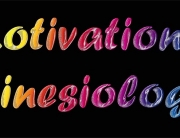Breathing is one of the simplest and easy to use forms of exercise. Yes, exercise and it is free. Add the simple technique described below to your regular exercise (or the one you are about to start) programme and in a few weeks the changes will become obvious.
Proper breathing stimulates the healthy expression of our thoughts and emotions, cleanses the blood, and integrates of mind, body and soul. It allows the body to stretch, relax and let go of tension, suppressed emotions and beliefs and stay healthy. The benefits include:
- reduced nervous tension
- improvements in hyper or hypotension
- improved lymphatic circulation and the resulting elimination of toxins
- better ability to learn
- increased mental clarity
- emotional calmness and centeredness
All this leads to more enthusiasm for living life to the full.
Many breathing techniques exist. The one outlined below is based on the bio-mechanics involved in the physical action of breathing.
During inhalation (breathing in) (fig.9) the abdomen expands as the diaphragm extends downward into the abdominal cavity. The ribs & chest expand upwards & out to the side, The shoulders gently open & draw back, opening the chest. The pelvis rotates forwards allowing the abdomen to expand. The spine straightens, massaging the pituitary gland & cranial bones open. This position allows the lungs to fully inflate.
Exhalation (breathing out) is the reverse (fig.10). The movement of the spine, sacrum & cranial bones act as a pump for the Cerebral Spinal Fluid inside the spine & brain. CSF is responsible for removing toxins from the Central Nervous System (CNS) & transporting hormones, nutrients & neurotransmitters. The movement of the cranial bones can play a major role in our wellbeing.
Breathing creates a “rocking” action which invigorates our whole being and maintains health and vitality by creating an aerobic environment. The movement of the spine, sacrum & cranial bones act as a pump for the Cerebral Spinal Fluid inside the spine & brain. CSF is responsible for removing toxins from the CNS & transporting hormones, nutrients & neurotransmitters. The movement of the cranial bones changes the pressure inside our skull, affecting the flow of CSF. The spine also moves in harmony with the rest of the body when we breathe correctly.
The action of the diaphragm and other muscles when breathing assists to pump blood back to the heart and lymph around the body. It is not uncommon for a person to release old emotions and beliefs when the diaphragm is relaxed. It is one of the major storage areas for unexpressed tension. The pharynx (in throat) acts in similar way to the diaphragm and both are controlled by the limbic system (in the brain). The parathyroids react and affect the calcium/phosphorus balance.
Our skin also inhales and exhales large amount of gases. Wearing loose fitting clothing, sensible sunbaking and careful use of anti-per spirants can assist our skin to breathe and release toxins.
The lungs collect energy from the air we breathe and the energy from the food we digest and distribute it through the lung meridian into the whole meridian system. Breathing as explained above can change our heartbeat and some believe our CNS uses the breathing cycle to scan for imbalances and problems. On the out breath the CNS scans from the high to low frequencies and in the reserve on the in breath.
Breathing is like a symphony, when balanced (aerobic/high) and in tune it sounds superb. When out of tune and unbalanced (anaerobic/low) it sounds terrible.
The aerobic (high) state affects blood, meridians, the ability to think clearly, feel and express our emotions. Body chemistry tends towards neutral to slightly alkaline.
The anaerobic state affects the bones, muscles and the denser tissues. Arthritis and chronic physical pain sufferers tend to be anaerobic and shallow breathers. These people have trouble letting go of their fixed and rigid thoughts and beliefs. They are unable to breath deeply and take in life. By shallow breathing they control what they feel and experience. They don’t want to accept the “uncomfortable” part of life and suppress their feelings and can end up emotionally disturbed. The body chemistry tends towards acidity and toxicity, a situation that makes recovery difficult. When we are anaerobic the CNS has trouble scanning and suppressed emotions and beliefs go unnoticed, leading to illness. Many heart conditions result from shallow breathing. Our ability to learn and cope is affected.
Breathing into the chest activates the left (logical/thinking) hemisphere and into the abdomen, activates the right (global/feeling) hemisphere of the brain. By using the above method brings integrates both sides of our brain.







Leave A Comment
You must be logged in to post a comment.